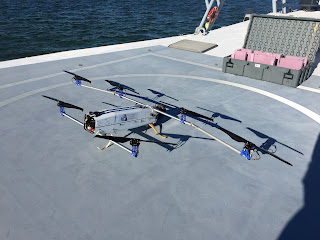Military Additive Manufacturing Summit
Delivering Innovative & Responsive 3D Printing Solutions to the Warfighter
1 February, 2018 - 2 February, 2018, Tampa, FL, United States
The Military Additive Manufacturing Summit is designed as an educational and training ''Town Hall'' forum, where thought leaders and key policy-makers across military services, Defense agencies, and civilian organizations can come together for actionable discussions and debate.
This year's Summit will focus on the technology and innovation needed to further develop additive manufacturing technology and current level of capability in order to deliver greater flexibility to the Warfighter in deployed environments.
This Year's Topics to Include:
Innovations in Advanced Additive Manufacturing
Logistical Support on Demand: Flattening the Supply Chain in Support of the Warfighter
Leveraging Practical Maintenance & Sustainment Solutions to Reduce Operational Costs
Improving Mission Readiness through Utilization of AM Technologies
Utilizing Additive Manufacturing to Reduce Strain on Existing Supply Chains
DoD Perspective on Enhancing the Industrial Base's Additive Manufacturing Capabilities
US Navy Perspective towards Additive Manufacturing: Leveraging the Technology to Enhance the Fleet Durability & Readiness
Redefining Manufacturing: Rapid Prototyping to Functional Production
Bringing Additive Manufacturing Capabilities to the Point of Need
Providing On-Demand Fulfillment & Reducing Dependence on Resupply Missions
Improving the Functionality of 3D Printed Parts and Equipment through AM Innovation
Why You Should Attend the Military Additive Manufacturing Summit
According to recent reports, the worldwide 3D printing industry is expected to grow to $12.8 Billion in 2018, and is projected to exceed $21 billion by 2020. Manufacturers across a broad spectrum of industries including automotive, aerospace, high tech, and medical products are all piloting and using 3D printing technologies today. However, the US Military is taking an extremely active role in implementing the unique set of tools that additive manufacturing has proven that it can offer to units in resource scarce environments operating under restricted time schedules.
Through the use of 3D printing solutions, the Military is able to enhance the maintenance and sustainment capabilities needed to reduce downtime; minimize the costs associated with having to purchase, transport, and store additional resources; offer more operational flexibility to leaders in the field of logistics; and provide units in remote locations with the ability to reduce the size of their supply chains becoming more self-sufficient and agile in isolated and contested environments.
Additionally, the latest innovation in this field is metal additive manufacturing. This is accomplished by taking a base material, usually in the form of a metal powder and using heat generated by lasers to build a form. Other materials are being explored for additive manufacturing as well. We are beginning to move beyond 3d printing only being extruded plastic polymers and the military is particularly interested in this. The Navy has taken the first steps to explore this technology and the other branches are engaged as well. This forum will offer additive manufacturing solution providers, members from Government, and leaders in academia the opportunity to hear from some of the US Military's most senior and qualified subject matter experts on the future role of additive manufacturing in the Defense industry.
Early Confirmed Speakers Include:
LTG Darrell Williams, USA, Director, Defense Logistics Agency
VADM Dixon Smith, USN, Deputy Chief of Naval Operations, Fleet Readiness & Logistics
MajGen Craig Crenshaw, USMC, Commanding General, MARCORLOGCOM
RADM John Polowczyk, Vice Director, J4, Joint Staff
MG Edward Dorman, USA, Director, J4 Logistics & Engineering, USCENTCOM
Cybersecurity for Additive Manufacturing Panel*
*Moderator* Col Howard Marotto, USMC, Lead for Additive Manufacturing/3D Printing Development and Implementation, HQMC
Dr. Jeremy Straub, Assistant Professor, Department of Computer Science, College of Science and Mathematics, North Dakota State University
Jeffrey Schrader, Chief Financial Officer, Guardtime
Keith Stouffer, Project Leader, Cybersecurity for Smart Manufacturing Systems Engineering Lab, NIST
Source:
https://www.asdevents.com/event.asp?id=18475&desc=Military+Additive+Manufacturing+Summit






























